- Home
- Orhan Pamuk
Istanbul Page 22
Istanbul Read online
Page 22
Let us recall that Walter Benjamin said people from outside a city are most interested in its exotic and picturesque features. These two nationalist writers could see the city’s “beauty” only in those parts where they themselves were outsiders. One thinks of a story told about the great Japanese novelist Tanizaki, who, long after extolling the traditional Japanese house and describing its structure in loving detail, told his wife that he would never live in one because it lacked western comforts.
Istanbul’s greatest virtue is its people’s ability to see the city through both western and eastern eyes. The first representations of local history in the Istanbul press were exaggerations, of the sort so loved by Sir Richard Burton, the translator of A Thousand and One Nights, and by Nerval, what the French call bizarreries. Koçu certainly excelled at conveying the history of the city through his “oddities,” thereby making the reader feel he was reading about a distant and alien civilization. Even when I was a child, when the city was at its most run-down, Istanbul’s own residents felt like outsiders half the time. Depending on how they were looking at it, they felt it was either too eastern or too western, and the resulting uneasiness made them fear they didn’t quite belong.
While Yahya Kemal and Tanpınar were living on one side of the city (westernized Pera), they drew upon beautiful, nationalist, melancholy, and picturesque scenes from another part of the city (the poor neighborhoods of the Old City) to create an image of Old Istanbul for İstanbullus of later generations. This dream neighborhood first appeared in the 1930s and 1940s in conservative magazines and newspapers, accompanied by crude imitations of landscapes painted by western artists. Accompanying these anonymous tableaux—for it was never clear who had originally painted them or where they were situated, or even what century they depicted, nor were most newspaper readers aware that they conveyed a western viewpoint—were black-and-white sketches by local artists of the poor neighborhoods and line drawings of their back streets. I particularly liked the reproductions of the painter Hoca Ali Rıza’s line drawings, the purest and least exotic in this genre, and indeed they were quite popular.
While the tourists arriving in Istanbul in the late nineteenth and early twentieth centuries were admiring its magnificent skyline and the way the light played on its seas and mosques, Hoca Ali Rıza was sketching the back streets, where the rush to westernization and modernization had been abandoned midway; and this perspective continues to be found in the photographs of Ara Güler. Ara Güler’s photographs show Istanbul to be a place where traditional life carries on regardless, where the old combines with the new to create a humble music that speaks of ruin, poverty, and humility, and where there is as much melancholy in the faces of the city’s people as in its views; especially in the 1950s and 1960s, when the last brilliant remnants of the imperial city—the banks, inns, and government buildings of Ottoman westernizers—were collapsing all around him, he caught the poetry of the ruins. In his Vanished Istanbul, with the marvelous photographs of Beyoğlu as I knew it as a child—its tramways, its cobblestone avenues, its shop signs, its tired careworn black-and-white hüzün—he also makes excellent use of the elements of the neighborhood picturesque.
This image of a black-and-white, broken-down, remote neighborhood, “where everyone is poor but honorable and knows who he is,” is especially popular during Ramadan, when the papers adorn their HISTORY and ISTANBUL columns with new reproductions of the old engravings and line drawings that seem to get cruder with each new year. The master of this subsidiary art was Reşat Ekrem Koçu, who illustrated his Istanbul Encyclopedia and his popular newspaper history columns not with unattributed reproductions of engravings but with crude sketches of them. (It was a matter of convenience: To isolate the one or two desired clichés in a finely detailed engraving was expensive and technically more difficult.) Many of the engravings were themselves imitations based on watercolors by western artists, but when popular artists use these derived black-and-white engravings as the basis for their own illustrations (invariably printed on poor paper the color of mud), you never see at the bottom of the image the name of the original artist or even the artist who made the “original copy”; there is only a note indicating it was taken “from an engraving.” In the fantasy of Old Istanbul, poverty was to be honored for preserving traditional identity, and it was therefore all the more attractive to the half-westernized, fervently nationalist, newspaper-reading bourgeoisie who had no interest in the harsh realities of urban life. As the dream of Old Istanbul came to define not just Istanbul’s poor neighborhoods but every part of the city except its skyline, a literature arose to fill in the particulars.
When they wished to emphasize the Turkish or Muslim side of these poor but slowly westernizing neighborhoods, conservative writers created an Ottoman heaven where no one questioned the power or legitimacy of the pasha, where families and friends confirmed their ties to one another through rituals and traditional values (these of course being humility, obedience, and contentment with one’s lot). Aspects of Ottoman culture that might offend westernized middle-class sensibilities—concubines, the harem, polygamy, the pasha’s right to beat people—were tamed and softened by right-wing authors like Samiha Ayverdi, who showed pashas and their children as more modern than they actually were.
Ahmet Kutsi Tecer’s much-loved play Streetcorner is set in a coffeehouse in a poor neighborhood on the outskirts of the city (modeled on Rüstempaşa); as in a Karagöz shadow play, all the city’s greatest characters come together to amuse us, distract us from the city’s harsh realities, and welcome us with open arms. This is a far cry from the novelist and short-story writer Orhan Kemal, who once lived in the back streets of Cibali (where his wife worked in a tobacco factory); he portrayed the same back streets as a place where the struggle to earn a living was so fierce even friends could come to blows. For me the lovely dream of a poor neighborhood was epitomized by the Uğurlugil Family, whose little adventures I enjoyed so much every evening on the radio; this family, as big, crowded, and modern as mine (though, unlike mine, a big happy family), somehow managed, despite its reduced circumstances, to find room for a black mammy.
Rooted as it was in the picturesque, in the melancholy of the ruins, the narratives of Old Istanbul were loath to examine the dark evils that might be lurking beneath the surface. This was, above all, a nationalist literature offering an innocent view of tradition, suitable for family enjoyment. So from the poor golden-hearted orphans who populated the books of Kemalettin Tuğcu, whose tales I loved so much when I was ten, the message was that even someone living in the poorest of the poor neighborhoods could, by dint of hard work and virtue (remember, these neighborhoods were identified as the very source of all the highest nationalist and moral values), find happiness one day; yet he was purveying this message during the seventies, even as the city around us was growing poorer every day.
Ruskin suggests that, because it is accidental, the picturesque can never be preserved. After all, what makes the scene beautiful is not the architect’s intention but its ruin. This explains why so many İstanbullus do not like seeing old wooden mansions restored: When the blackened, rotten wood disappears under bright paint that makes them look as they did at the height of the city’s glory and prosperity in the eighteenth century, their lovely degenerative connection with the past is severed. For the image of the city that İstanbullus have carried with them over the past century is as the child of poverty, defeat, and ruin. When I was fifteen and doing my own paintings, it was especially when painting the back streets that I became troubled about where our melancholy was taking us.
CHAPTER TWENTY-EIGHT
Painting Istanbul
When I was fifteen, I began to paint local landscapes quite obsessively, but not out of any special love of the city. I knew nothing of still life or portraiture, and I had no desire to learn about them, so my only option was to portray the Istanbul I could see from my window or when I went out in the street.
I drew the city in two ways.
At first, I did Bosphorus scenes with the sea passing through the center of the city and the skyline in the background. Generally, these scenes owed a great deal to the “bewitching” landscapes produced by two hundred years of western travelers. I painted the Bosphorus as seen between the gaps in the apartment buildings from our house in Cihangir, with Kızkulesi, Fındıklı, and Üsküdar in the background; later, I did the Bosphorus as seen from our subsequent house in the heights of Beşiktaş Serencebey—a sweeping view of the mouth of the Bosphorus, Sarayburnu, Topkapı Palace, and the silhouette of the Old City. I could do these drawings without ever leaving home. That I was painting the fabled “Istanbul view” was something I could never forget. Everybody already acknowledged the beauty of my subject, and because it was also real I was less inclined to ask why it was beautiful. When I finished my painting and asked myself the same question I would put to those around me so many thousands of times throughout my life—“Is it beautiful? Did I make it look beautiful?”—I could be sure that my choice of subject alone guaranteed me a “yes.”
And so these paintings seemed to draw themselves, and I didn’t feel I had to live up to the western artists who’d drawn the scene before me. I was not knowingly imitating any one of them in particular, but I used what I had gleaned from them in many of my touches. I would make the waves on the Bosphorus look as if they’d been drawn by a child, in the style of Dufy; I’d do my clouds in the style of Matisse; I’d cover up any areas I’d not been able to paint in detail with dots of paint “like the impressionists.” I sometimes used scenes from postcards and calendars. My paintings were not markedly different from the Turkish impressionists who used impressionist techniques to paint all the great Istanbul views forty or fifty years after French artists had pioneered them.
Because I was painting something that everyone agreed was beautiful, and because this released me from the obligation of proving to myself and others that I was painting beautifully, I found painting relaxing. When that great deep urge overtook me, I would gather up my materials as fast as I could, but even as I assembled my paints and brushes around the canvas that would take me to the second world, I often had no idea what I was going to paint. That didn’t matter. Painting was simply the means to an end; in my elation, any postcard view from one of the windows of our house would do. It did not bore me in the least to be doing the same view I’d done a hundred times already in much the same way. The important thing was to delve at once into the painting’s details and escape this world: to situate a ship passing down the Bosphorus in a way that suited the perspective (since Melling’s time, the central preoccupation of all artists who have painted the Bosphorus). To lose myself in the particulars of the silhouette of the mosque behind it—to draw cypresses and car ferries accurately; to take my time on the domes, the lighthouse at Sarayburnu, and the men fishing from the shore—was to feel as if I were wandering among the very things I was painting.
Painting allowed me to enter the scene on the canvas. This was a new way into the second world of my imagination, and when I had penetrated the most “beautiful” part of that world—when the painting was all but done—a strange ecstasy would overtake me. The vision shimmering before me looked real. I would forget that I had painted a Bosphorus scene that everyone knew and loved; this was a wondrous thing of my own imagination. The joy I felt upon finishing a painting was so great that I wanted to touch it, pick out some detail to embrace, even take it into my mouth, bite it, eat it. If something got in the way of this fantasy, if I did not quite lose myself in my painting, if (as happened more and more often) the first world intruded to ruin my childish game, I’d be overcome by an urge to masturbate.
This first type of painting was akin to what the poet Schiller called “naïve poetry.” My choice of subject was much more important to me than my style or my technique; most of all, I wanted to believe that my art was a spontaneous expression of something inside me.
With time, the childish, joyous, colorful, carefree world these Bosphorus paintings depicted began to look very naïve indeed, and my enjoyment of them diminished. Like so many of my favorite childhood toys—the miniature cars I had once parked so neatly on the borders of my grandmother’s carpet, the cowboy guns, the train sets my father brought me from France—these bright naïve paintings could no longer rescue me from the boredom of everyday life. So it was that I turned my back on the city’s famous views and began my second way of painting the city: quiet side streets, forgotten squares, cobblestone alleyways (heading down the hill to the Bosphorus, with the sea, Kızkulesi, and the Asian shore in the background), and domed wooden houses. These works, some of which were black-and-white drawings and some of them oil on canvas or cardboard, but still with very little color and a great deal of white, were born of two different influences.
I had been much affected by the black-and-white illustrations of poor neighborhoods, appearing ever more frequently in the “History” columns in newspapers and magazines and loved the silent melancholy poetry of the poor neighborhoods. So I painted the little mosques, the crumbling walls, the Byzantine arch just visible in the corner, the domed wooden houses, and, bowing to the rules of perspective I had only just mastered, the long rows of humble houses receding into the distance.
The other influence was Utrillo, whose work I knew from reproductions and a thrilling melodramatic novel based on his life. When I wanted to do a painting in the style of Utrillo, I chose a back street in Beyoğlu, Tarlabaşı, or Cihangir, where there were very few mosques or minarets. When the urge to paint overtook me, I would take out a few of the prints I had made of the photographs I’d taken while strolling about the city streets; after contemplating them at length, I’d go on to paint a Beyoğlu scene, and—though they are very rare in Istanbul—I’d put Utrillo-like shutters on the windows of all the apartment houses. As I finished the painting, ecstasy would overtake me—just as it had in the old days, when I was younger—I’d feel as if the scene I’d painted was my own creation but also real. Even as I identified with the scene, I felt a degree of detachment. To attain my ultimate goal—to leave myself behind—it was no longer enough to identify naïvely with the world in my painting; I had to make a spiritual leap as confusing as it was cunning: I’d become someone named Utrillo, who in Paris had once done paintings so very much like these. Of course I didn’t really believe this; even when I was doing my Bosphorus paintings, I only half believed I had entered the world of my painting; now I only half believed I was Utrillo. But the new game was useful nevertheless, particularly if I was suffering an insecurity I could not begin to understand; if I doubted the value of the painting I had just done or was anxious for others to find it “beautiful” or “meaningful.” By contrast, when the scene became too real, I felt my compass narrowing. In this case I would follow a pattern that would become more routine when sex entered my life soon afterward: As I was finishing a painting, a great wave of joy would crash over me and I would lose my bearings; this would give way to gloom and confusion and when this had receded, I’d take a rest.
Taking the still-wet painting I’d executed so hastily from one of my own photographs, I’d hang it on the wall at eye level and try to view it as if it were a painting by someone else. If I liked it, a haze of pleasure and security would settle over me; I had succeeded gloriously in capturing the melancholy of the back streets. But if—as happened more often—I judged my painting inadequate and deficient, I would examine it from other angles, standing farther away and then coming up closer, sometimes hopefully adding a few touches with my brush, struggling at last to accept the thing I had done. By now I could no longer believe I was Utrillo, no longer suppose there was something of him in my paintings. So just as I would do in later years after having sex, I’d fall into despair—it was not the view that was wanting but my painting. I was not Utrillo, but someone who had tried to do a painting like Utrillo.
I could not fend off that deepening melancholy; it spread like a stain. The almost-but-not-quite-sha
meful truth was that I could paint only when I thought I was someone else. I’d imitated a style; I’d imitated (though without ever using that word) an artist with his own unique vision and way of painting. And not without profit, for if I had somehow become someone else, I too now had “my” own style and identity. I would take a faint pride in this version. This was my first intimation of the thing that would nag at me in later years, the self-contradiction—a Westerner would call it the paradox—that we only acquire our own identity by imitating others. My unease at being under the influence of another artist was relatively light; I was still a child and I was painting to amuse myself. Another consolation, a simpler one, was that the city I had painted, the Istanbul I had photographed, itself exerted a more powerful influence on me than any artist could.
During the days when painting was my main escape, there would be a knock on the door and in would stride my father; if he found me caught up in the excitement of creation, he would face me just as respectfully as when he caught me as a child playing with my penis; without a hint of condescension, he’d ask, “So how are we doing today, Utrillo?” The implied joke reminded me that I was still child enough to get away with imitating others. I was sixteen when my mother, knowing how serious I was about painting, gave me permission to use the Cihangir apartment, where we had once lived and where my mother and my grandmother now stored old furniture, as a studio. On weekends and sometimes in the afternoon, leaving Robert Academy, I would go to this cold empty apartment; having lit the stove and warmed myself up, I would choose one or two of the photographs I’d taken and, in a flash of inspiration, execute one or two huge paintings before returning home, tired and spent and full of a strange melancholy.

 Snow
Snow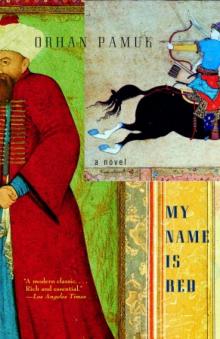 My Name is Red
My Name is Red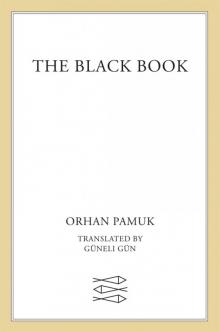 The Black Book
The Black Book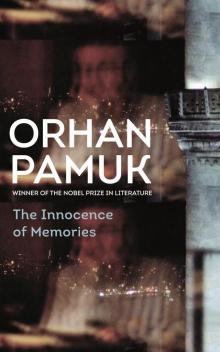 The Innocence of Memories
The Innocence of Memories The White Castle
The White Castle Other Colors
Other Colors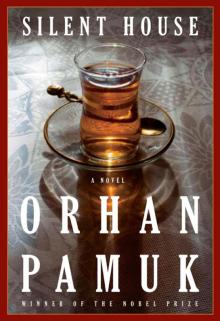 Silent House
Silent House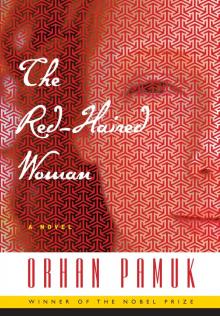 The Red-Haired Woman
The Red-Haired Woman The Museum of Innocence
The Museum of Innocence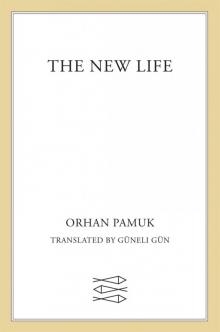 The New Life
The New Life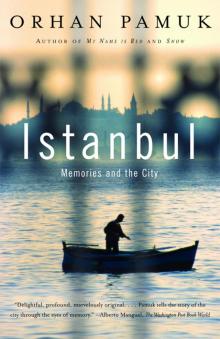 Istanbul
Istanbul